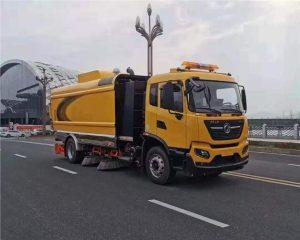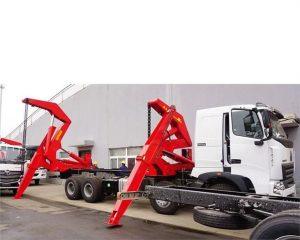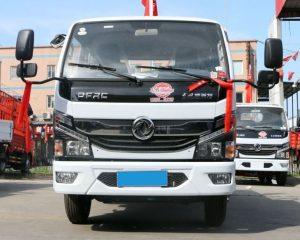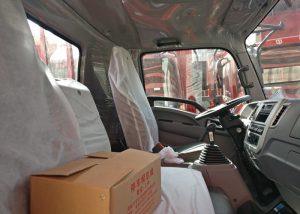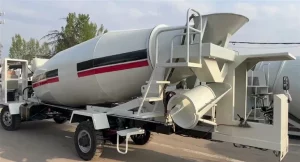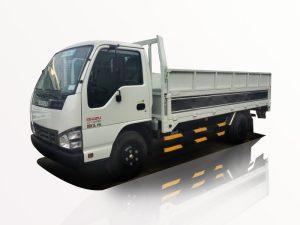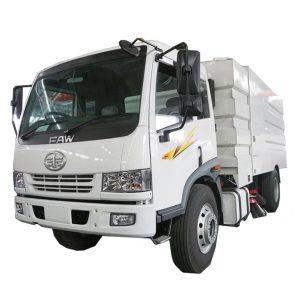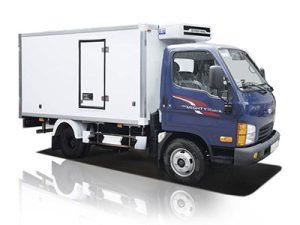Monday to Saturday - 8:00 -17:30
Everything You Need to Know About Trucks with Boom: A Comprehensive Guide
Introduction
Trucks with booms are essential in various industries for tasks that require elevation and reach, making them incredibly versatile. These vehicles combine the capabilities of a truck with the functionality of a crane, allowing operators to access hard-to-reach areas. Whether for construction, telecommunications, or tree care, understanding the different types of boom trucks, their features, and best practices can help you get the most out of these powerful machines. In this article, we will explore everything from the types of boom trucks to their applications, maintenance, safety tips, and more.
Types of Trucks with Boom
Boom trucks can be classified based on their design, operational capacity, and intended use. Let’s delve into the different types available.
1. Articulating Boom Trucks
Articulating boom trucks, also referred to as knuckle-boom trucks, are characterized by their flexible arm design. The boom can bend at the joints, allowing for enhanced maneuverability around obstacles, making them ideal for urban environments.
2. Telescoping Boom Trucks
Telescoping boom trucks feature a straight, extendable boom. These trucks are typically used for jobs requiring vertical lift, such as roof work or high-level inspections, making them a favorite in the construction industry.
3. Crane Trucks
Crane trucks represent a powerful combination of truck and crane capabilities. These trucks can lift significant weights, making them suitable for heavy-duty jobs in construction, shipping, and logistics.
4. Bucket Trucks
Bucket trucks are specialized vehicles equipped with a bucket at the end of the boom, allowing workers to reach high places safely. Commonly used by utility companies for power line maintenance and tree trimming, these trucks prioritize worker safety and efficiency.
Key Features of Trucks with Boom
Understanding the key features of boom trucks can help you choose the right vehicle for your tasks.
1. Boom Range and Height
The reach of the boom and its height capabilities are crucial when selecting a truck. Most models can reach heights ranging from 30 to 100 feet, depending on the job requirements.
| Truck Type | Max Height | Max Reach |
|---|---|---|
| Articulating Boom | 60 feet | 40 feet |
| Telescoping Boom | 100 feet | 60 feet |
| Crane Truck | 150 feet | 100 feet |
| Bucket Truck | 50 feet | 35 feet |
2. Load Capacity
The load capacity of a boom truck is a critical factor for safety and effectiveness. Most trucks can handle loads between 1,000 and 3,000 pounds, but it is essential to consult specifications for exact numbers.
3. Safety Features
Safety should never be compromised when using a boom truck. Common safety features include stabilizer legs, safety harnesses, and emergency shut-off systems. Always ensure that the truck is equipped with the necessary safety mechanisms.
4. Mobility
The mobility of a boom truck is also important, especially for urban jobs. Many boom trucks are designed for off-road capability while others are optimized for road travel. Choose based on your operational environment.
Applications of Trucks with Boom
Trucks with booms serve various purposes across multiple sectors. Here are some common applications:
1. Construction
In the construction industry, boom trucks are invaluable for placing materials at height, conducting inspections, and performing maintenance work on structures.
2. Utilities
Utility companies frequently use bucket trucks to access power lines and perform necessary repairs or installations. These trucks ensure linemen can work safely at impressive heights.
3. Telecommunications
Telecommunications companies utilize boom trucks for the installation and maintenance of cell towers and communication lines, requiring precise control and height for safe operation.
4. Tree Care
For tree care professionals, boom trucks allow for safe trimming and removal of trees that are difficult to access. The stability and height capabilities are essential for both safety and effectiveness.
5. Signage Installation
Businesses and municipalities require boom trucks for sign installation and maintenance. These trucks provide the necessary reach to install signs at significant heights without compromising safety.
Tips for Operating a Boom Truck Safely
Operating a boom truck requires skill and adherence to safety guidelines. Here are essential tips for safe operation:
1. Proper Training
Ensure that all operators receive proper training and certification. Understanding the mechanics and safety features is crucial for effective operation.
2. Conduct a Pre-Operation Inspection
Before using a boom truck, perform a visual inspection to check for any defects, fluid leaks, and wear and tear on the boom. This can prevent accidents and malfunctions.
3. Use Safety Gear
Always wear appropriate safety gear, including hard hats, harnesses, and non-slip footwear when operating or working around the boom truck.
4. Know Your Surroundings
Assess the work site for potential hazards such as overhead power lines, unstable ground, and nearby structures. Understanding your environment will help mitigate risks.
5. Follow Load Limits
Abide by the truck’s load limits at all times. Overloading can cause tipping or other catastrophic failures.
6. Communicate Effectively
Always have a spotter when operating the boom truck, especially in tight spaces or busy areas. Clear communication between the operator and crew is vital for safety.
Maintenance of Trucks with Boom
Regular maintenance is crucial for the longevity and safe operation of boom trucks. Here are essential maintenance tips:
1. Daily Inspections
Perform daily inspections before operation to identify any potential issues. Check fluid levels, brakes, tires, and boom mechanisms for proper functioning.
2. Scheduled Service
Follow manufacturer guidelines for scheduled service and maintenance. Regular oil changes, hydraulic fluid checks, and component replacements are essential to keep the truck operating smoothly.
3. Keep it Clean
Regular cleaning of the truck, especially the boom, helps to prevent corrosion and ensures visibility for operators. Cleanliness leads to safer operation and prolongs the truck’s lifespan.
4. Check Safety Equipment
Regularly inspect and test safety equipment, such as harnesses, emergency shut-offs, and stabilizers, to ensure they function correctly when needed.
Choosing the Right Boom Truck for Your Needs
Selecting the right truck with a boom for your needs can be challenging. Here’s how to make the right decision:
1. Assess Your Requirements
Evaluate the specific tasks you need the truck for, considering factors such as height, load capacity, and maneuverability. Your requirements should determine the truck type.
2. Consider Operational Environment
If you’re working in tight urban spaces, an articulating boom truck might be more suitable. For construction sites requiring heavy load lifting, a crane truck could be a better choice.
3. Budget Constraints
Determine your budget for purchasing or leasing a boom truck. It’s essential to balance affordability and the quality and features of the truck.
4. Brand and Model
Research reputable brands and their models. Reading reviews, consulting experts, and considering warranties and services offered can guide your decision.
Innovations in Boom Truck Technology
Technological advancements continually enhance the functionality and safety of boom trucks. Here are some innovations to be aware of:
1. Improved Safety Features
New models come equipped with advanced safety features such as automatic leveling, load sensors, and remote diagnostic systems that significantly improve operational safety.
2. Enhanced Fuel Efficiency
Many modern boom trucks are designed with fuel efficiency in mind, implementing eco-friendly technologies that reduce fuel consumption while maintaining power and performance.
3. Smart Technology Integration
Some trucks integrate smart technology that allows for real-time monitoring of operations, improving efficiency and reducing the risk of accidents.
Frequently Asked Questions
1. What is a boom truck used for?
A boom truck is used for various tasks requiring elevation, such as construction, tree trimming, utility maintenance, and signage installation.
2. How high can a boom truck reach?
The height a boom truck can reach varies by type, with most capable of reaching between 30 to 100 feet, and some models even exceeding 150 feet.
3. Are boom trucks safe to operate?
When operated correctly and maintained well, boom trucks are safe. Operators should undergo training and adhere to safety protocols to minimize risks.
4. What maintenance does a boom truck require?
Mainece includes regular inspections, scheduled service according to manufacturer guidelines, and cleaning the vehicle to prevent corrosion and ensure functionality.
5. Can you rent a boom truck?
Yes, many companies offer boom truck rentals. Renting can be cost-effective for short projects or when a company doesn’t have the budget to purchase a truck.
6. What factors should I consider when buying a boom truck?
Consider factors such as height and load capacity requirements, operational environment, budget, and necessary safety features when selecting a boom truck.


